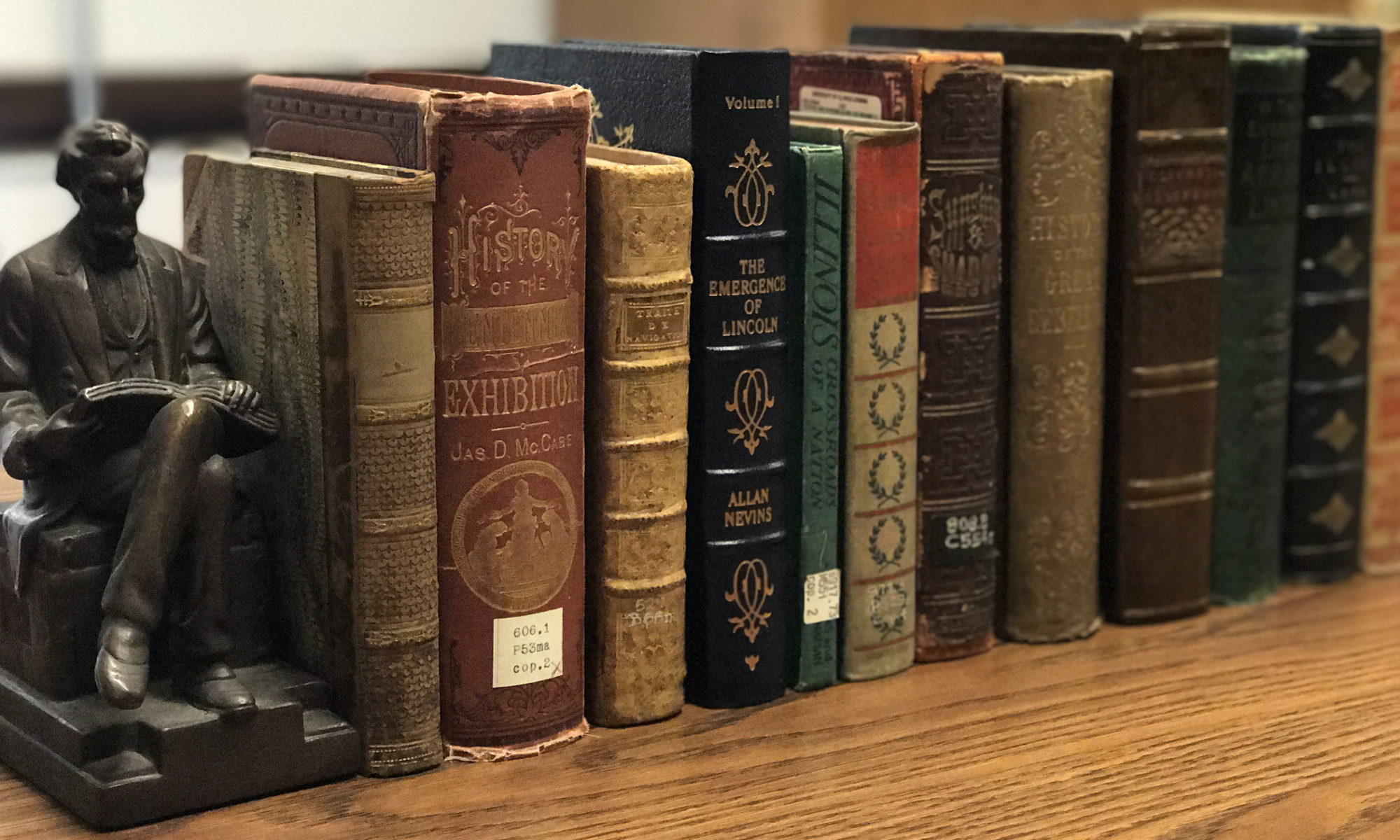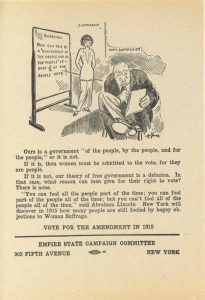
One hundred years ago, on August 18th, 1920, the United States government ratified the 19th Amendment, giving American women the right to vote. One hundred years ago, after decades of organizing, marching, petitioning, picketing, publishing pamphlets, and holding conventions, women were finally allowed to fully participate in their government. Of course, this ratification was only a stepping stone—as it omitted the rights of all women.
The 19th amendment specifically stated that citizens couldn’t be denied the right to vote on the basis of sex—that doesn’t mean that there weren’t still other avenues by which voters could be discriminated against and disenfranchised. However, ratification of the 19th amendment is still a historic victory, as it gave women the opportunity to be politically active, and paved the way for women to hold seats in their local and national governments.
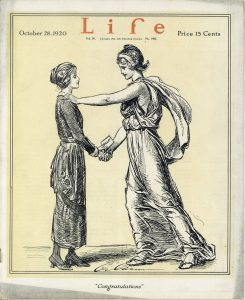
The Suffrage Movement began in 1848 at the Seneca Convention in New York. Led by Lucrecia Mott and Elizabeth Cady Stanton, women collectively explored their role as women and demanded their right to vote. The Seneca Convention ignited the women’s suffrage movement, garnering the momentum needed to gain national attention from both women and men.
In 1869, The National Woman Suffrage Association (NWSA) was formed by Stanton and Susan B. Anthony. A powerful platform, NWSA was able to connect suffrage chapters and organizations across the nation. IHLC’s National Woman Suffrage Association Records from 1913-1920 (MS 997) contains the final seven years leading up to the ratification of the 19th amendment.
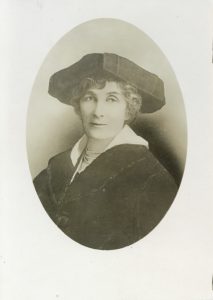
Four folders in this collection include typed biographical sketches of prominent women leaders in chapters of various suffrage movement organizations. Of Illinois, included are: Mrs. Jacob Baur (Chicago), Mrs. Robert D. Cunningham (Evanston), Mrs. Catherine Waugh McCulloch (Chicago, and whom you can read more about in our March 2019 blog post), and Mrs. Grace Wilbur Trout (Illinois Equal Suffrage Association).
Illinois was the first state to ratify the 19th amendment. Prior to its ratification, the vote for women’s suffrage was held on June 4, 1919. IHLC’s Jean Thompson’s Woman’s Suffrage Movement Collection (MS 971) contains ephemera from before, during, and after the ratification of the 19th Amendment.
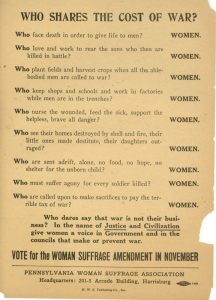
Several other IHLC collections, such as the Thomas and Elizabeth Chambers Morgan Papers (MS 139) and the Baker-Busey-Dunlap Family Papers (MS 830), contain items related to the women’s suffrage movement. The variations in scope give the repository a holistic look at the movement from an individual, community, and national perspective. 100 years later, women continue moving forward.
Image Sources:
From MS 971: Jean Thompson Woman’s Suffrage Movement Collection, 1871- 2005.
Empire State Campaign Committee flyer, 1915. (MS 971). Part 1, Box 1, Early Twentieth Century Folder, 2 of 4.
Life, October 28, 1920. Part 1, Box 1, Post-Ratification.
Who Shares the Cost of War? Flyer from Pennyslvania Woman Suffrage Association, undated. Part 1, Box 1, Early Twentieth Century Folder, 2 of 4.
From MS 997: National American Woman Suffrage Association Records 1913-1920.
“Convention Bulletin. The Committee on American Citizenship National League of Women Voters.” February 12, 1920-February 18, 1920. Box 1, Folder 1.
Howard, Clifford. “Why Man Needs Woman’s Ballot.” New York, circa 1910s. Box 1, Folder 7.
Portait of Emma Winner Rogers, Treasurer of N.A.W.S.A, St. Louis, Missouri, undated. Box 1, Folder 8.
Mead, Lucia Ames. “What Women Might Do With The Ballot: The Abolition of the War System.” New York, circa 1910s. Box 1, Folder 7.
Select IHLC Resources:
MS 997: National Woman Suffrage Association Records, 1913-1920.
MS 917: Jean Thompson Woman’s Suffrage Movement Collection, 1871-2005.
MS 830: Baker-Busey-Dunlap Family Papers, 1866-1993.
MS 139: Thomas J. and Elizabeth Chambers Morgan Papers, 1878-1912.
Beldon, Gertrude May. “A history of the woman suffrage movement in Illinois.” 1913.
Additional Resources:
